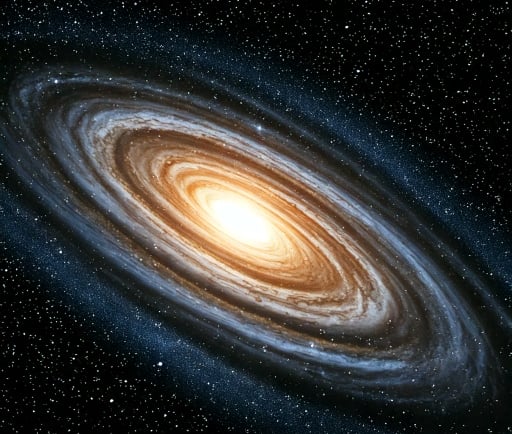Investigating the Unclear Star Formation of NGC 2841: A Flocculent Spiral


The NGC 2841
NGC 2841 is a captivating flocculent spiral galaxy located in the constellation of Ursa Major. Distinguished by its short spiral arms, this galaxy stands out for its lack of well-defined galactic limbs, which raises significant questions about its star formation processes. Unlike traditional spiral galaxies that exhibit clear, well-organized structures, NGC 2841 displays a more complex and less comprehensible formation pattern, which intrigues both professional astronomers and amateur enthusiasts alike.
Characteristics of Flocculent Spirals
The term 'flocculent spiral' refers to a class of galaxies marked by their patchy appearance and an absence of distinct spiral arms. In NGC 2841, this characteristic is evident as the galaxy showcases a diffuse structure where star formation occurs in shorter, less-defined arcs. This leads to a softer outline of the spiral arms compared to more conventional spiral galaxies. The arrangement of stars, gas, and dust in these formations suggests a turbulent history of interactions with surrounding galaxies and potentially, gravitational influences that cause the distribution of matter to develop irregularly.
The Mystery of Star Formation
One of the central mysteries surrounding NGC 2841 is the nature of its star formation. In well-defined spiral galaxies, star formation often correlates with clear spiral patterns where star density peaks. However, the flocculent nature of NGC 2841 challenges these notions, suggesting that new stars may be forming in a more chaotic environment. Observational data reveal that star formation is occurring in distinct regions of the galaxy, yet the lack of a coherent structure complicates our understanding of these processes.
Recent studies indicate that the irregular and patchy star formation within NGC 2841 could be a result of various factors such as gravitational interactions with nearby galaxies or internal processes that disrupt the typical spiral dynamics. These interactions may scatter the gas clouds, leading to sporadic star formation rather than the systematic formation usually observed in classical spirals.
Conclusion
In summary, NGC 2841 serves as a fascinating case study for astronomers seeking to understand the dynamics of flocculent spirals. Its unclear star formation patterns and short spiral arms challenge traditional models of galaxy morphology. By continuing to observe such galaxies, researchers hope to unravel the complexities of star formation in less conventional settings, thus enhancing our overall comprehension of galaxy evolution. The ongoing investigation into NGC 2841 not only contributes to our knowledge of galactic structures but also paves the way for future discoveries in the field of astrophysics.
